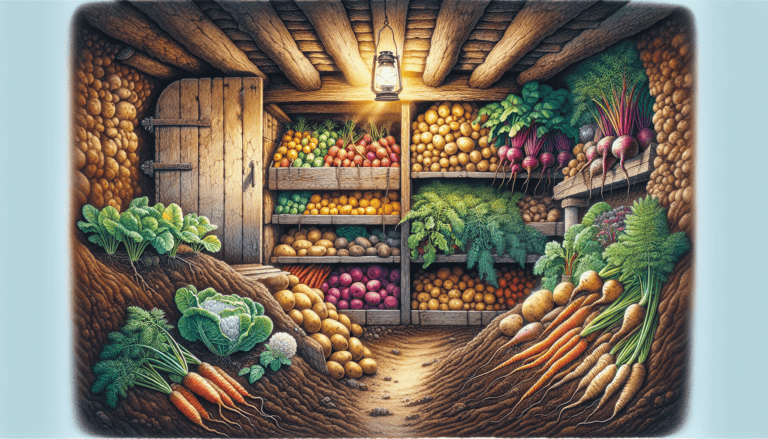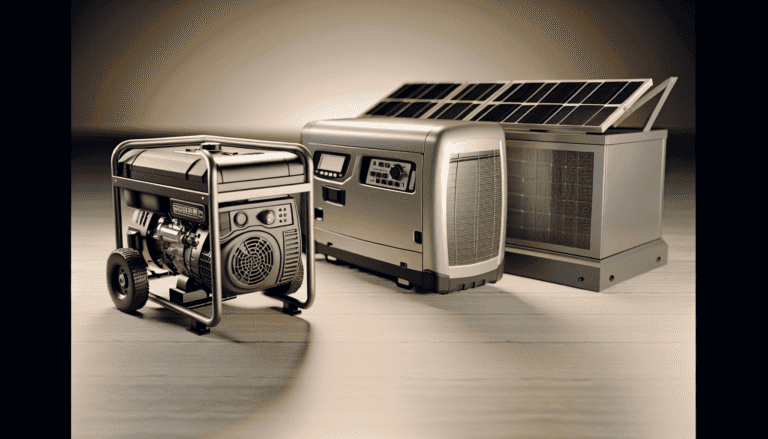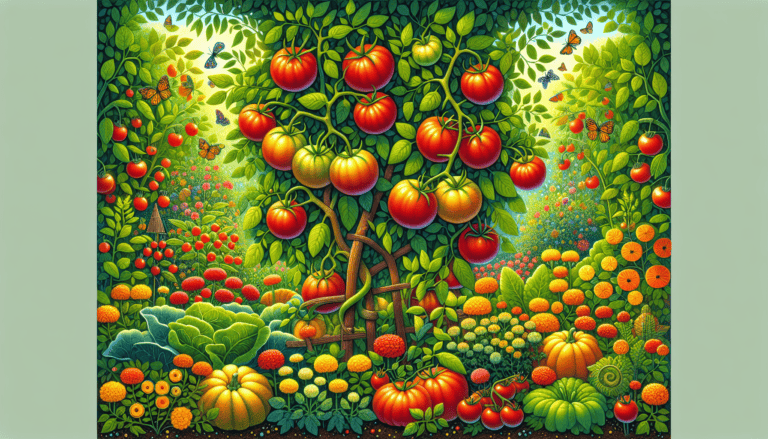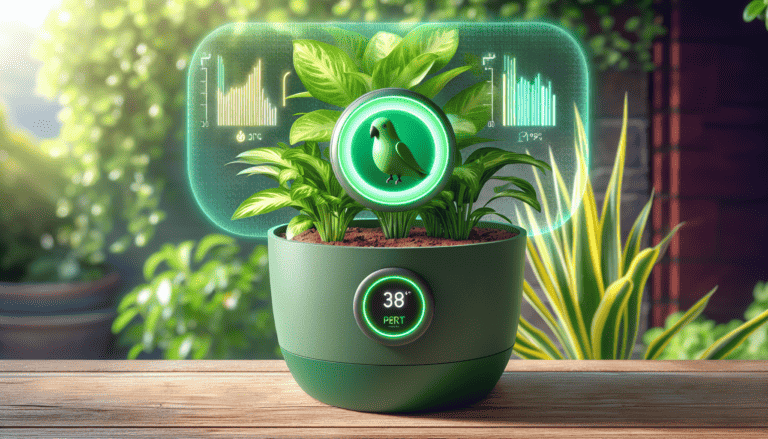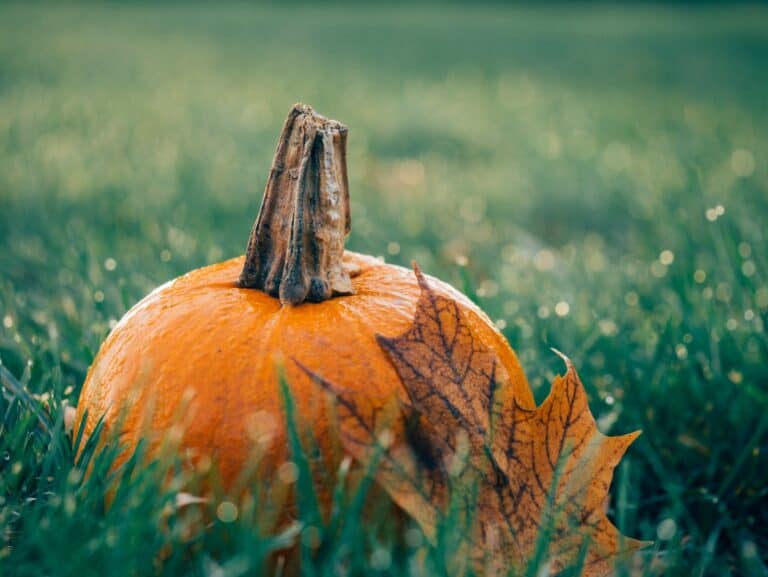Planting the Best Beans to Grow in Georgia: Guide for Beginners
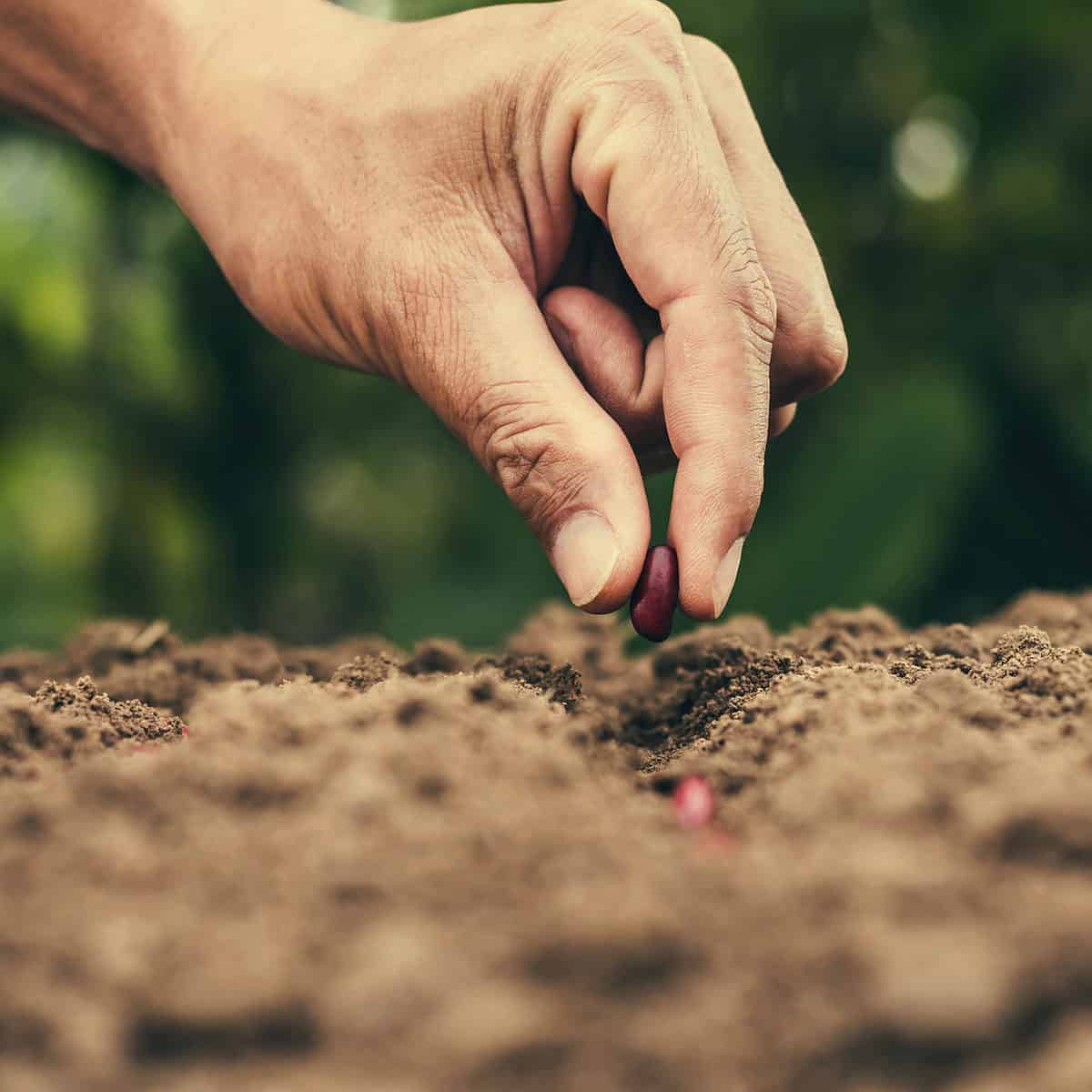
If you’re excited to learn about the different varieties of the best beans to grow that will thrive in your Georgia garden, then this guide is for you! We’ll provide insight on the optimal conditions for planting and growing beans as well as tips on harvesting, storing them and even some delicious recipes so that you can make full use out of every bean harvest. So let’s get started with our gardening journey together by getting ready to plant those precious little beans!
Key Takeaways
Explore the ideal climate and soil conditions for growing beans in Georgia!
Discover four delicious varieties perfect for your garden, plus planting & harvesting tips.
Enjoy tantalizing bean recipes like Southern green beans, Lima bean succotash & pickled dilly beans!
Ideal Climate and Soil Conditions for Beans in Georgia
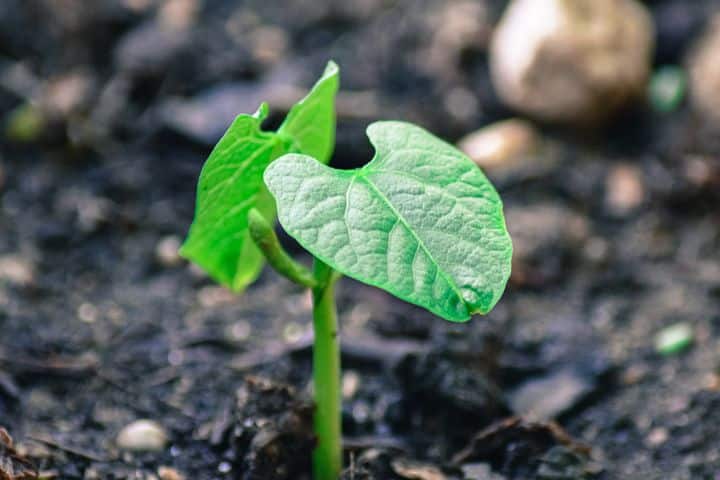
For successful bean cultivation in Georgia, it is essential to be aware of the optimal temperature and soil conditions. We will discuss what kind of temperatures are necessary as well as rainfall levels, water requirements and how the different soils should be prepared for growing beans. Soil temperatures play a major role when cultivating these types of legumes in this particular area so ensuring they remain at an ideal level can ensure better results with your harvest.
Temperature Requirements
The key to successful bean production in Georgia is getting the timing of planting right. Plant your green beans after all potential danger from frost has passed, so you can ensure soil temperatures are at least 65 degrees Fahrenheit – ideal for germination and growth. Soil with a temperature of 70 F (21 C) helps keep seeds moist, creating better conditions for producing tender pods. All these factors taken into consideration should yield great results when it comes to growing green beans!
Rainfall and Watering Needs
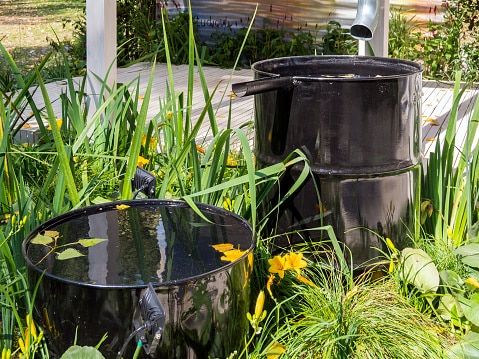
It is essential to provide regular and consistent irrigation when growing beans in Georgia for an optimum harvest. Water lightly until seedlings are visible, maintain a moist soil environment while plants flower, and then water more thoroughly all the way up to bean harvesting. The best practice would be doing this early on in the day so leaves can dry out overnight. Utilizing drip irrigation equipment should help with avoiding any unnecessary overwatering of green beans or their surrounding soils.
Soil Types and Preparation
To ensure your green beans have the best possible growing environment, it’s important to make sure that their soil is well-draining. Compost and organic matter can be mixed into the ground in order to improve drainage, while an ideal pH of 6.0, 6.5 will give plants access to all necessary nutrients for growth. For a comprehensive soil prep procedure before sowing seeds or transplanting seedlings, 1 inch of compost should be worked into the earth along with slow-release vegetable fertilizer tailored for greens like beans!
Top Bean Varieties for Georgia Gardens
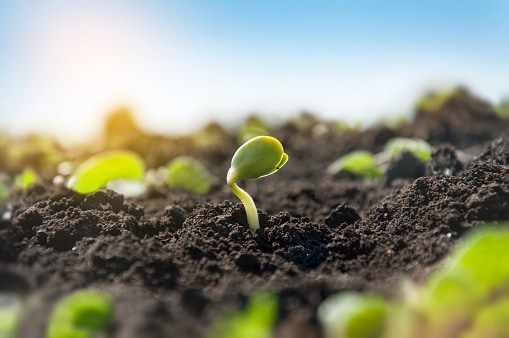
When it comes to growing beans in Georgia, there are four main types that can be cultivated: bush bean, half runner bean, pole beans and lima beans. All of these varieties have particular qualities suited for different gardens.
To learn more about each kind of bean let us explore their features a bit further. Bush Beans should be planted directly into the ground or raised beds as they don’t require any special support such as trellises nor do they take up too much space when compared to Pole Beans which grow long vines requiring additional structures like poles or strings for them to climb on – making this type ideal if you’re limited with room in your garden plot but still
Bush Beans
Bush bean plants, also known as bush beans, are short shrubs that can reach about 2 feet tall. Perfect for container or in-ground gardens alike, some popular varieties of these veggies to plant in Georgia backyards include Jade and Non-Tough Half Runner types plus Greasy Grits and Josephine Jackson cultivars. Other options you have when planting this type of veggie includes Blue Lake 274 (BL274), Gina and Roma II by name along with the Bronco variety. Although convenient due to their size (a positive aspect especially when thinking small spaces) they can be tricky on your body while harvesting since there’s less room between the plants than usual!
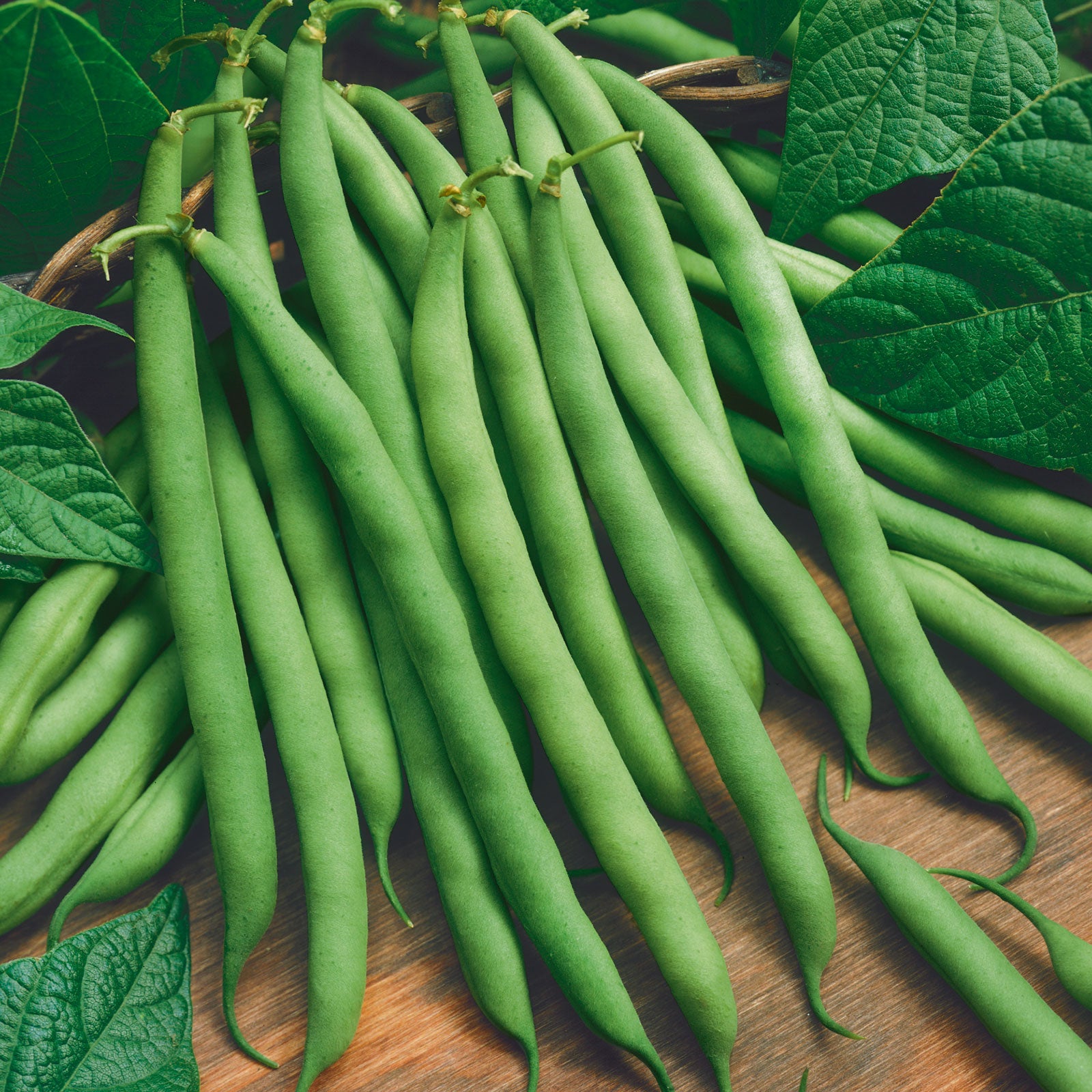
Blue Lake 274
Easy to grow and classic green bean. Green beans are a popular choice for Georgia gardens, and there are many varieties to choose from, including pole beans and bush beans. They prefer a well-draining soil with a pH between 6.0 and 6.8, and thrive in full sun. Green beans are a good source of protein, fiber, and iron, and can be eaten fresh or frozen.
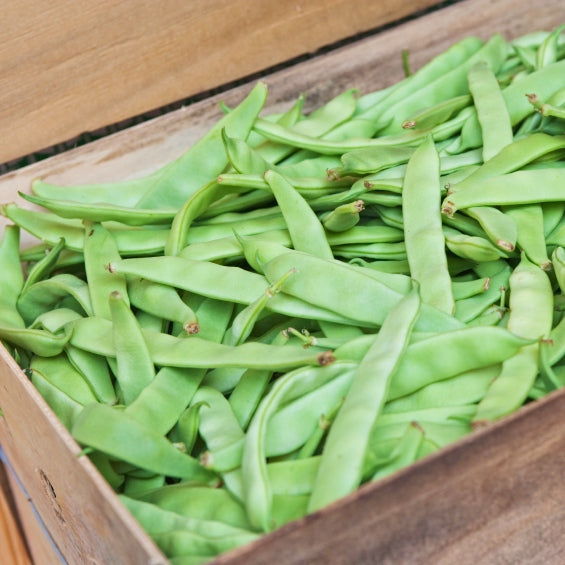
Roma II
Dependable flat bean. Full of flavor but a little slower growing. They prefer a well-draining soil with a pH between 6.0 and 6.8, and thrive in full sun.
Pole Beans
Pole beans are a type of bean that need something to climb, such as a trellis or netting, in order for them to grow. Suitable varieties specific to Georgia gardens include Kentucky Wonder and Rattlesnake beans, Purple Podded Pole Bean and Seychelles pole Beans. There is also the Oriental yard-long variety along with Romano and Scarlet Runner types. Not only do these plants produce an abundant harvest but they can add visual appeal too when growing on support structures like nets or fences! Planting any of these pole bean varieties into your garden will give you both functionality from their wonderful harvests plus eye catching aesthetics within it.
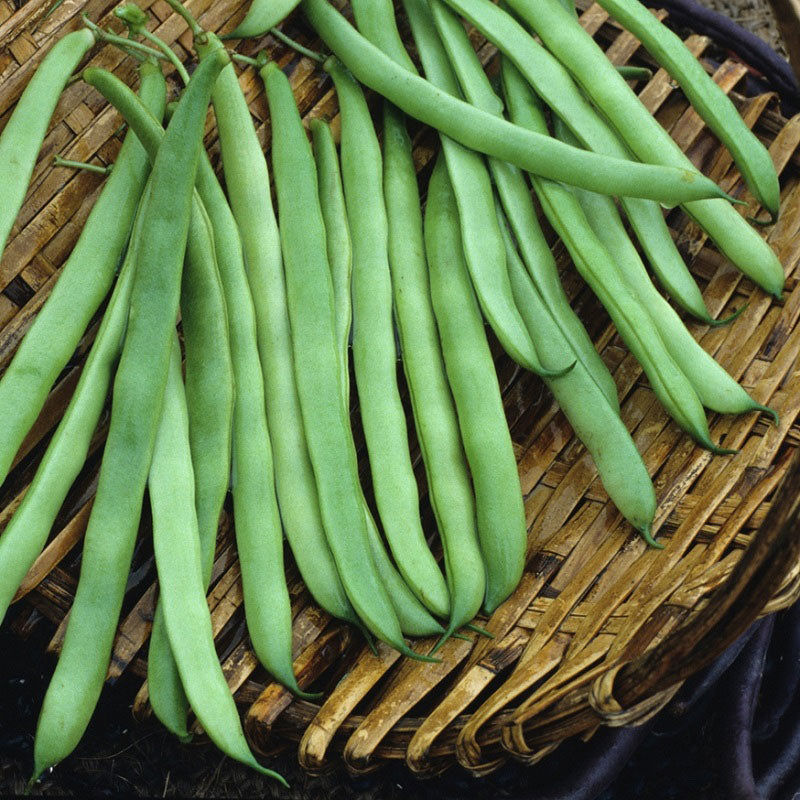
Kentucky Wonder Brown (Pole)
Heirloom pole bean. Full of flavor and easy to grow with high yields. They prefer a well-draining soil with a pH between 6.0 and 6.8, and thrive in full sun.
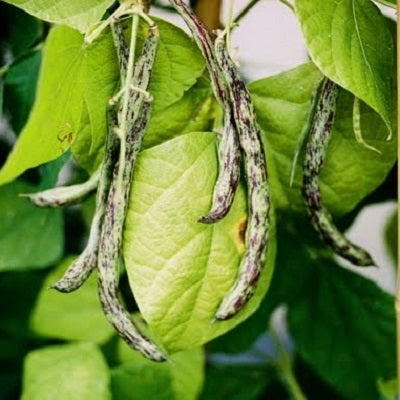
Rattlesnake (Pole)
Great and lovely pole bean for canning or freezing. The distinct color and tender deliciousness makes them excellent for cooking. They prefer a well-draining soil with a pH between 6.0 and 6.8, and thrive in full sun.
Half Runner Beans
Half runner beans are a cross between bush and pole type beans, producing sweet-tasting pods that can reach heights of 3 to 10 feet. This unique kind of bean is popular in Georgia. Notable varieties include the Mountaineer Half Runner, State Half Runner, and White Half Runner. For these types of legumes to grow successfully it’s important they be provided with adequate support structures as they tend to get quite tall when fully grown.
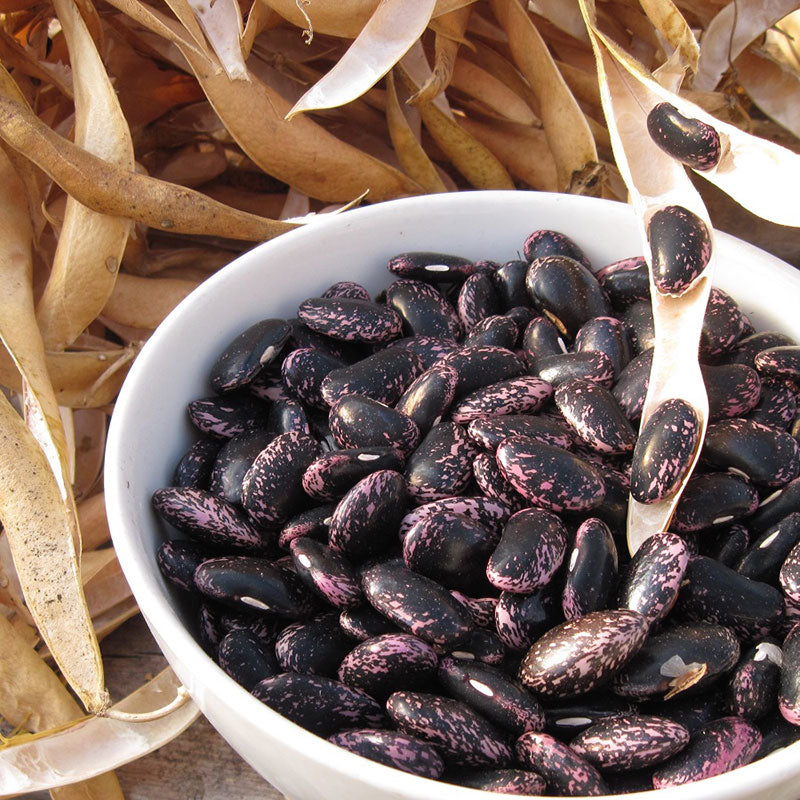
Scarlet Emperor
Rapid climber with great tasting beans with the added benefit of attracting the beautiful hummingbirds. Runner bean with gorgeous orange flowers. A more intense flavor than snap beans. They prefer a well-draining soil with a pH between 6.0 and 6.8, and thrive in full sun.
Lima Beans
Lima beans, with their bright green pods and large size, are favored in Georgia gardens for the softness they offer. Varieties such as Nemagreen and Harvester have resistance to disease, perfect when it comes to protecting your lima bean crop!

Lima Beans
One of my favorite, most adaptable beans. Full of flavor and great for canning and freezing. Lima beans, also known as butter beans, are a great option for Georgia gardens. They prefer a well-draining soil with a pH between 6.0 and 6.8, and thrive in full sun. Lima beans are rich in protein, fiber, and iron and you can eat them fresh or dried.
Make use of this incredibly versatile type of bean by trying out different recipes which feature them prominently. With so many greens that can be enjoyed from these garden-grown beauties, why not give a few dishes a try?
Planting and Growing Tips for Beans in Georgia
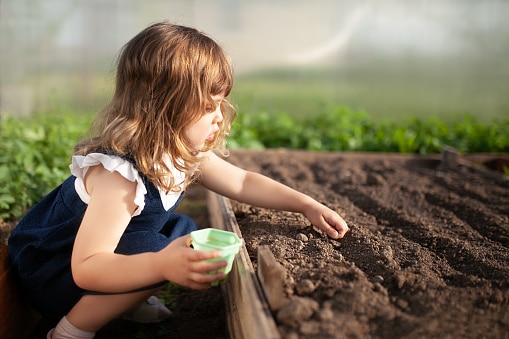
After examining the ideal climate, soil type and bean types for Georgia gardens, we’ll move on to some tactics for planting and harvesting in order to get a plentiful yield. The topics discussed will be sowing seeds, pest/disease handling as well as trellising or adding support structures. Every single measure taken when it comes to preparing your garden is essential if you want an abundant harvest of beans from your very own garden!
Sowing Seeds
When planting bean seeds in Georgia, the right spacing, depth and time of sowing must be observed. Bush beans need to be placed 2-3 inches away from each other while pole beans should start at 1 inch deep with a gap of 2 inches between them. As they mature thinning out up to 4 inches apart for full development. To allow maximum growth, keep 6-inch rows during cultivation.
Seeds should only be put into soil when it has warmed up past 55°F (12°C) post the last spring frost so that successful germination can occur . Following these guidelines will ensure healthy crop production.
Trellising and Support
The key to cultivating strong and healthy pole beans or half runners is giving them reliable support. A trellis or teepee are excellent choices when it comes to pre-planting the seeds as this set up prevents contact with the ground while allowing enough air circulation for disease prevention. Establishing such a foundation will help your bean plants grow robustly, thereby increasing their yield potential immensely.
Pest and Disease Management
It is imperative to safeguard your beans from infestations and diseases for a fruitful harvest. In Georgia, one common pest that affects bean crops are the Mexican bean beetles which can be curbed with protective covers over rows of plants as well as manually removing affected areas.
To make sure no disease like Stem Anthracnose infects the crop it’s best practice to shift what kind of beans you plant in different years while always using quality seed products. Taking these precautions will ensure optimal health for any given crop so farmers see high yields come their harvesting season.
Harvesting and Storing Georgia Beans
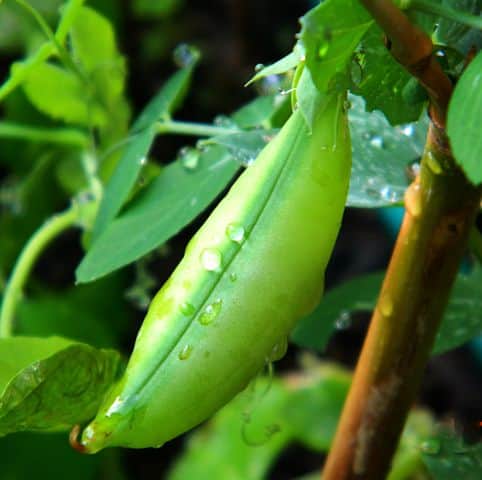
It is finally the moment to enjoy what you have been cultivating for months, harvesting beans! Here we will guide through when and how it should be done, in order to get full flavor out of them. Harvesting your crop at its best point guarantees top-notch taste as well as consistency.
Harvesting tips are crucial: timing matters but also take extra care regarding storing afterwards. This way you can ensure maximum freshness & quality up until devouring the harvest’s delicious fruits.
When to Harvest
Harvesting beans at the right time is essential for their best flavor and texture. Bush types can be collected in 50-60 days, while pole ones should snap cleanly when bent before being picked. For half runner beans, wait until seeds become bigger and pods reach 6 to 8 inches long with a soft feel. Lima varieties need harvesting from June through July if sown during spring or between October to December prior to first frost occurring. It’s important not neglect this step as it can ruin all the effort put into growing them!
Harvesting Tips
It is essential to be attentive when gathering beans, utilizing proper methods so that the plants are not harmed. When harvesting, gently remove them from their stems and ensure all of the pods have been found by lifting up foliage for a thorough search. For great taste, pick small tender ones. If these steps are followed you can look forward to a successful yield!
Storing Beans
When it comes to keeping beans fresh and high-quality, proper storage is key. It’s recommended that dry bean seeds can last up to three or six years under optimal conditions. While freshly harvested ones should be placed in the refrigerator for no more than seven days. Freezing them could also extend their shelf life although the nutritional value may deteriorate over 3, 6 months time period.
In order for your upcoming planting season’s crop of bean plants to remain full of flavor and vibrant colors when they’re eaten Store them away securely in a cool, dark spot where there are limited changes in temperature as well as low humidity levels so you’ll get optimum use out of all those delicious beans!
Delicious Bean Recipes to Try
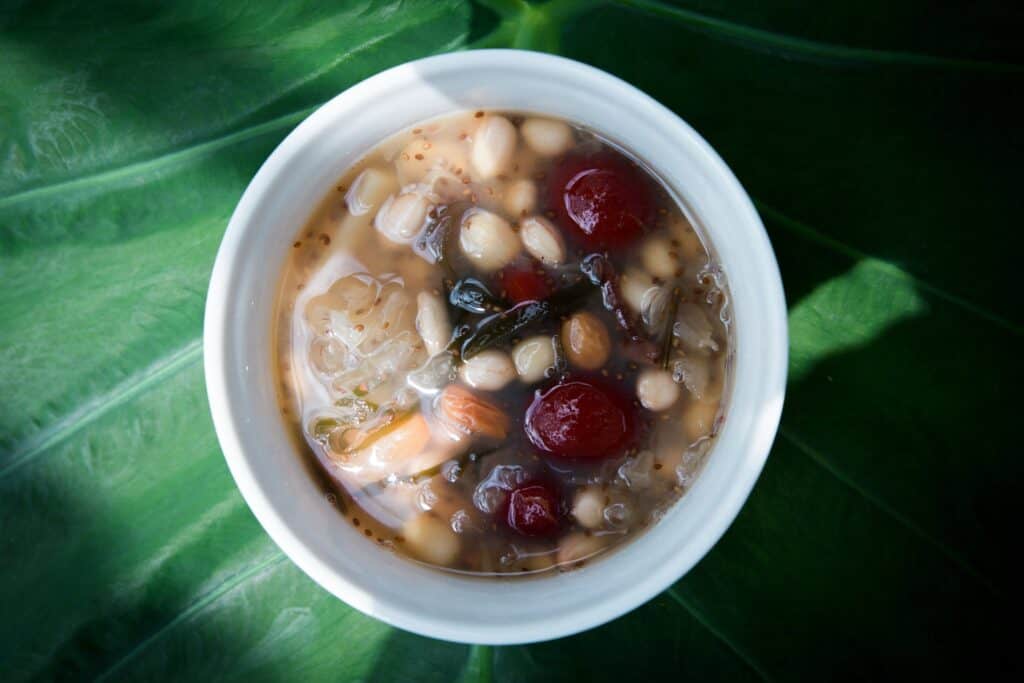
After gathering, reaping and storing your harvest of beans, why not try out some delicious recipes? In this part we will present three tasteful bean dishes: Southern style green beans, lima succotash, as well as pickled dilly beans.
Get ready to savour the intense flavours from these freshly grown black or snap (also called)beans! As you cultivate them they have their own unique character waiting for discovery when eating home-grown delicacies such as these.
Southern Green Beans
For a tasty side dish, bacon and onions are essential components of a classic Southern green bean recipe. Start by frying some small pieces of bacon in a saucepan over medium heat until the fat is rendered out and crispy. Once cooked through, add your beans to the pan for added flavor as they simmer until tender.
In another pan, cook down chopped onion until it becomes translucent then combine with the beans before serving, this comforting plate is excellent for both entertaining guests or an easy weeknight dinner!
Lima Bean Succotash
Lima bean succotash is an incredibly flavorful combination of lima beans, corn, and bell peppers. Begin by boiling the limpas until they are fully cooked then sautéing onions and garlic with butter to create a tasty base. Toss in the potatoes along with pepper for some additional texture plus previously drained lima beans – stirring everything together till it’s hot throughout. Finally season generously with salt/pepper as desired. This hearty side or main dish will add plenty of vivid colors onto your plate which make any meal brighter!
Pickled Dilly Beans
Try pickled dilly beans for a tart and tasty preservation method. You’ll need fresh string beans, canning salt, either white vinegar or apple cider vinegar, water, red pepper flakes, garlic cloves and some form of dill. Seeds or freshly cut is best.
Pack the jars with these ingredients tightly – standing them upright so that the flavor from your chosen dill (seed form are preferable) envelops every bean properly.. Beforehand you will have to check an accurate recipe in regards to ratios between its contents including: vinegars quantity vs water & salt measurement too). After two weeks they should be ready but if want more intense flavoring wait 3-4 before trying out this delightful snack at home added as a side dish on any favorite meals!
Summary
Gardening in Georgia can be an enjoyable and rewarding undertaking if you know the ideal climate, select bean varieties suitable for your garden, follow planting guidance, collect and store properly. Consider making tasty dishes such as Southern green beans cooked to perfection with lima bean succotash or pickled dilly beans using your fresh harvest of greens!
Frequently Asked Questions
What beans grow best in Georgia?
In Georgia, if you’re aiming to cultivate beans, then green ones are your optimum choice. These warm season crops flourish with air temperatures ranging from 65°F – 85°F and soil temps of no less than 55°F for the best growth possible. Green beans require these specific conditions when grown in the soil.
Check out UGA extension for more detailed information
What is the easiest bean to grow?
Growing runner beans is an easy and rewarding task – they are sure to yield plenty of sweet tasting produce throughout the summertime, whether you plant them in a vegetable patch, along your garden border or even inside a container.
Can you grow beans in Georgia?
In Georgia, beans can be grown in both spring and fall. Around half of the planted acreage takes advantage of this opportunity and nearly all are irrigated, a vital component for successful growth!
How can I ensure proper irrigation for my beans in Georgia?
To cultivate healthy beans in Georgia, set up a drip irrigation system and water the plants early. This helps ensure that your crop will have adequate moisture without getting overwatered. Watering at this time of day also prevents any possible problems caused by too much liquid on the bean foliage. Early watering provides consistent hydration to maximize yield and quality from your beans every year!
What are some common pests and diseases that affect beans in Georgia, and how can I prevent them?
It is important to prevent the Mexican bean beetles and Stem Anthracnose from affecting your beans in Georgia. To do so, keep rotating your crops with quality seeds every year as well as use row covers and manually remove any pests or diseased areas you see.

